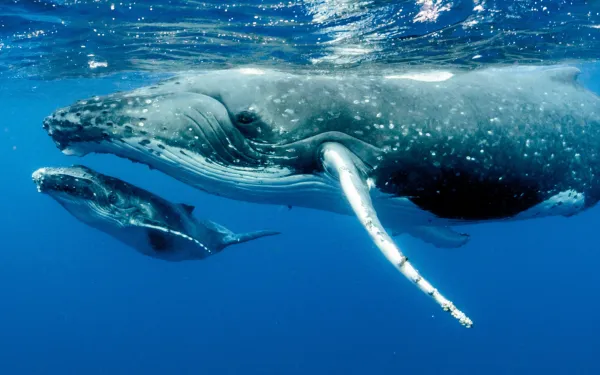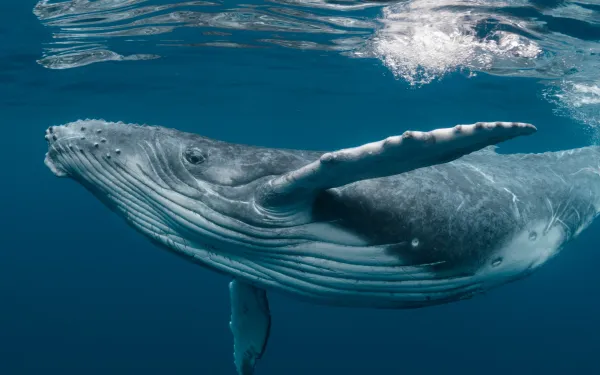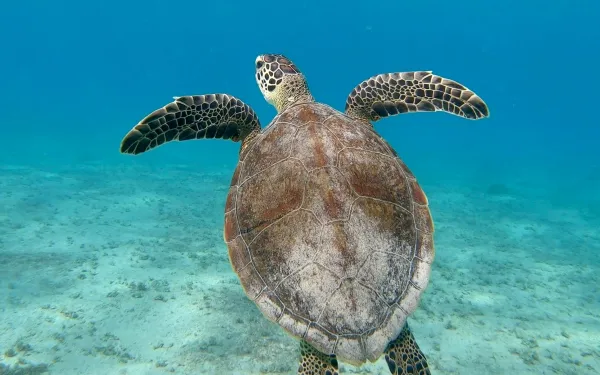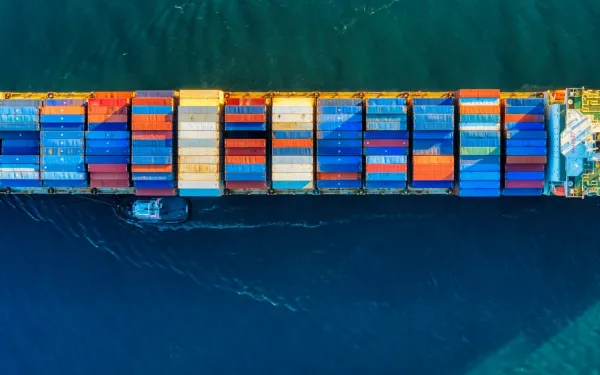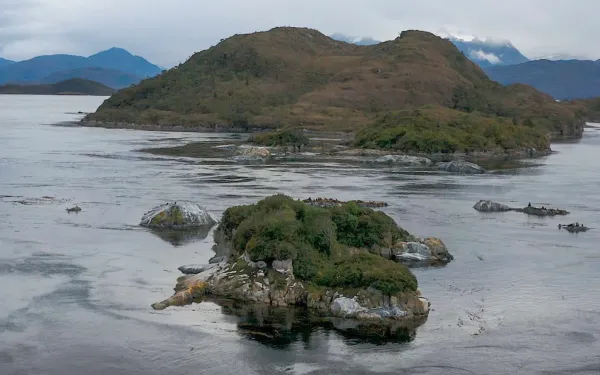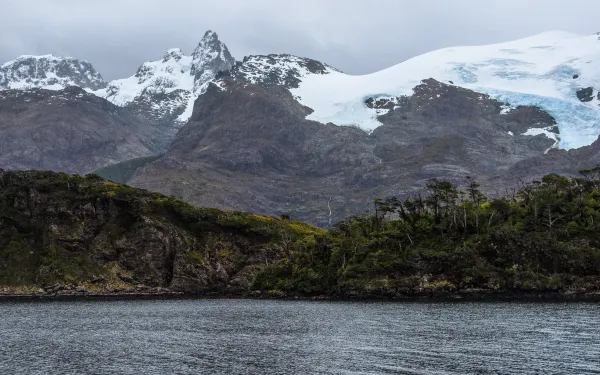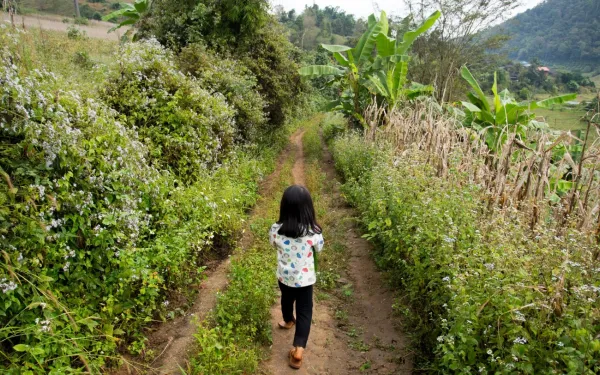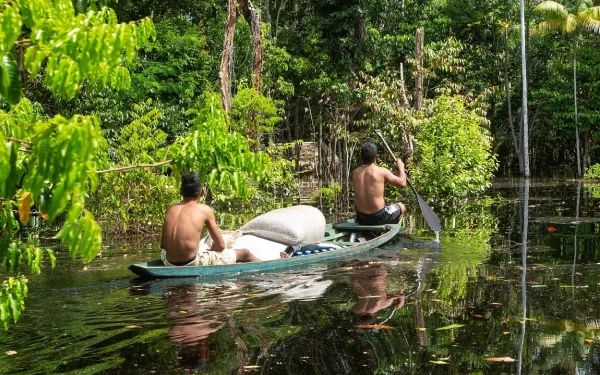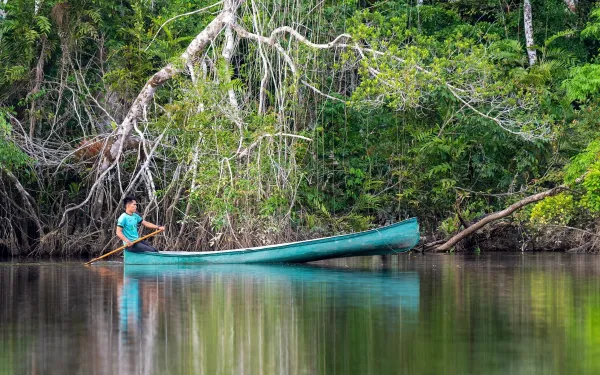
Learn about the negotiations to reduce maritime shipping emissions
The decarbonization of productive and economic activities is essential and urgent to address the triple crisis –climate, pollution and biodiversity loss– that the world is facing.In maritime shipping –which moves 10 billion tons of cargo each year and accounts for 2.9% of global greenhouse gas (GHG) emissions, including carbon dioxide (CO2)– the global need to reduce and eventually eliminate these emissions is being addressed by the International Maritime Organization (IMO), the UN specialized agency responsible for setting standards for safe, efficient and environmentally sound shipping.The move toward decarbonization is critical because without significant change, shipping emissions could increase by as much as 50% by 2050.The IMO has a revised emissions reduction strategy that was agreed in 2023 by the 175 countries that make up the organization. It is expected to reduce emissions from the sector by up to 30% by 2030, 80% by 2040 and reach net zero by around 2050. Implementation of the strategy is currently the subject of international negotiations.AIDA is participating in these negotiations as part of the Clean Shipping Coalition, an international coalition of organizations. In addition, AIDA is coordinating efforts with Ocean Conservancy and Fundación Cethus to generate advocacy with Latin American countries and to collaborate with updated technical information on the progress of the negotiations and their implications for the region.The decarbonization of global shipping and its economic impact is a very important discussion for Latin America and the Caribbean. It is necessary that all countries and economic sectors align themselves with clear targets and that all impacts are assessed equally and fairly, as well as the ways in which countries can mitigate them. Read on to learn more about this important process. What measures are being discussed to reduce emissions from maritime shipping?Negotiations are underway at the international level to select the package of measures needed to meet the 2023 targets for reducing greenhouse gas emissions from shipping. This package will include both technical and economic measures. Its final structure will be decided in April this year at the IMO headquarters in London, marking a global milestone in the fight against the climate crisis.Technical measures include a global fuel standard, carbon capture on ships, energy efficiency measures for the fuels used, and reductions in ship speed. They all aim to make maritime transport as efficient as possible in terms of the fuels used and to gradually phase out the use of the most polluting fuels. This means using the least amount of energy, emitting the least amount of carbon dioxide and keeping the sector in operation.In addition to technical measures, economic measures are proposed to put a price on carbon emissions from maritime transport. Increasing the efficiency of ships is expected to have not only a technological component but also a market incentive. This combination is crucial for achieving emission reduction targets, as it will provide both the public and private sectors with the necessary resources:The economic resources to invest in the new technologies, new fuels, and other investments needed for the energy transition.An economic stimulus to close the current cost gap between fossil fuels and near-zero emission clean technologies. To define a price for carbon dioxide emissions, there are two main proposals:The first has a flexible structure with respect to emissions. In its simplest form, it takes account of differences in emissions when implementing the measure. To this end, a "permissible limit" of carbon dioxide emissions is envisaged, with ships being divided into those below and those above the limit. The former could receive a financial reward, and the latter would pay a fee for the carbon dioxide emitted under a system of emission quotas. In this sense, although there is a mechanism to regulate emissions below the set limit, the tolerance of these limits offers the possibility of an accelerated reduction, which could delay the energy transition that the climate crisis requires.The second has a universal structure, i.e. a fixed price for all CO2 emissions generated by the operation of the maritime fleet. The aim is to create a market stimulus that will increase the demand for new low-emission technologies (new ships and fuels) and encourage maritime operators to purchase them in order to avoid paying a fee. This measure is expected to provide more accurate monitoring of total emissions from ships, motivate a faster and more pronounced energy transition, and collect and then redistribute a significant number of economic resources among maritime operators and countries to mitigate the disproportionate costs and negative impacts of the decarbonization process. What does decarbonizing shipping mean for Latin America and the Caribbean?According to the United Nations Development Program (UNDP), Latin America and the Caribbean is one of the most vulnerable regions to climate change-related disasters, so actions aimed at achieving decarbonization targets in different sectors of the regional economy are essential to address the climate crisis.On the other hand, actions specifically aimed at decarbonizing maritime transport will have different impacts in the short, medium and long term in each of the countries of the continent. For example, the choice of one or the other proposal for the payment of a tariff for the sector's CO2 emissions - the flexible modality or the fixed price - will have a different impact in each country. What all scenarios have in common is that the region will be strongly affected by the process of decarbonizing maritime transport.In this context, it is important for countries to identify the scenarios that allow them a greater range of actions to compensate for these impacts and to ensure that the transition is equitable and fair, without leaving any country behind.In economic terms, the introduction of a universal price on CO2 emissions would allow States to receive part of the economic resources generated to compensate and mitigate the effects of decarbonization. The amounts and forms of this transfer of resources will be agreed within the IMO. The combination of more ambitious measures (technical and economic) is expected to raise up to $120 billion annually in the coming years. The flexible proposal for paying for emissions does not include mechanisms for redistributing resources, as these would go directly to ship operators and fuel producers. This would leave countries to mitigate the impact of decarbonization with their own resources.From an environmental perspective, without the incentive of a universal price, there is a risk that the flexible scheme will indirectly encourage the continued use of fuels that generate CO2 emissions, particularly in regions with limited economic resources to invest in the least polluting state-of-the-art technology. This would result in a delay in achieving emission reduction targets for the world's shipping fleet and would move countries away from meeting their climate change commitments under the IMO.In general, the costs of reducing CO2 emissions from shipping and other sectors, which are at the root of the current climate crisis, are a reality for all countries, although the impact varies by region. The active participation of Latin America and the Caribbean in the international discussions on this issue throughout 2025 is essential to ensure that the energy transition and the reduction of maritime emissions are fair and equitable. It is important that the countries of the continent adopt a position that allows them to protect their economic and environmental interests from the economic consequences of this process. If the IMO's decarbonization strategy does not live up to its ambitions, we will have a shipping industry that exacerbates the climate crisis and its impacts. The success of this strategy will be the achievement of a global consensus on environmental considerations. The equity and fairness of the transition must be one of the key elements. Recognizing the differentiated impacts of maritime decarbonization measures and their compensation, especially in the most affected countries, will ensure a triumph based on criteria of justice and environmental equity.
Read more
